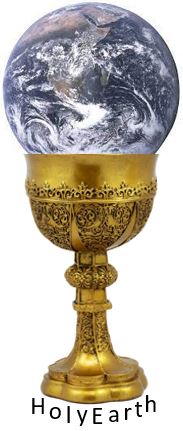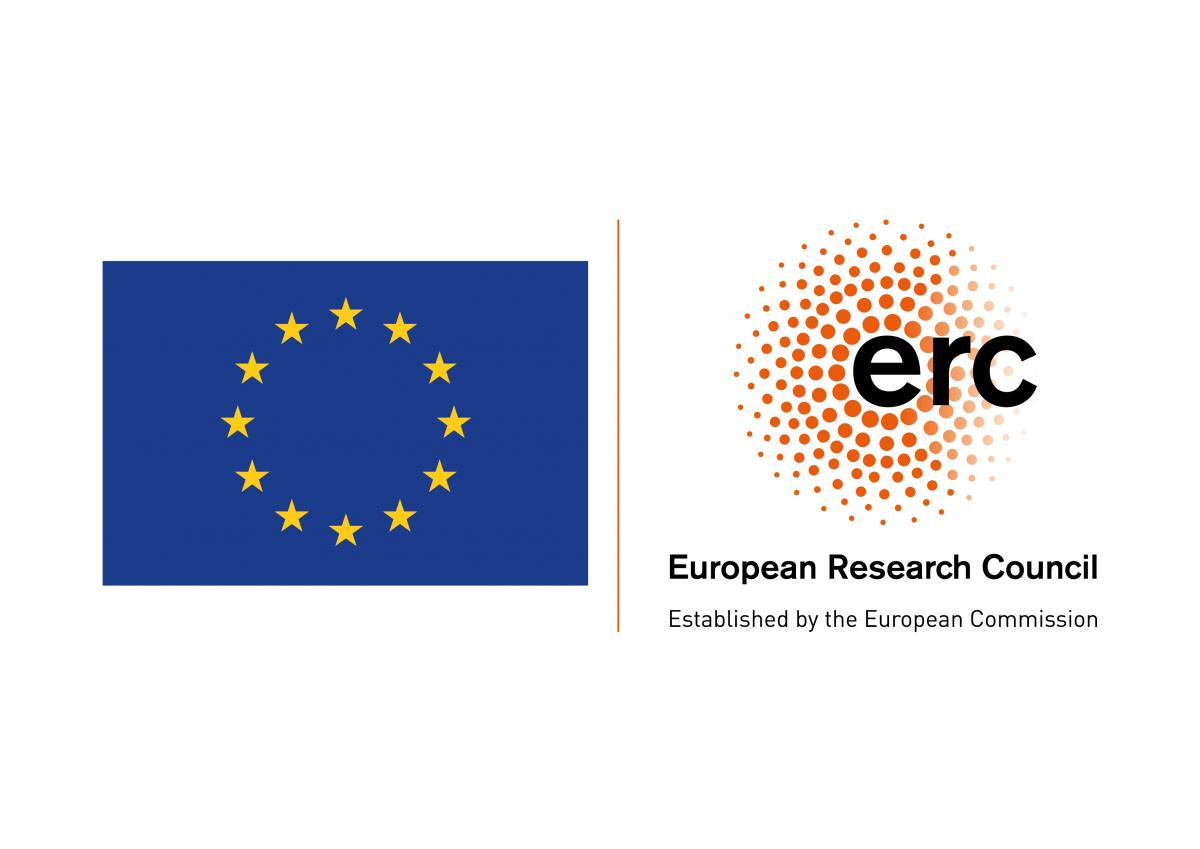
 HolyEarth
HolyEarth
A holistic approach to understand Earth formation
grant N. 101019380
Publications
- C. Burkhardt et al. "Terrestrial planet formation from lost inner solar system material". Sci. Adv. 7, eabj7601 (2021) (
 pdf)
pdf) - A. Morbidelli et al. "Contemporary formation of early Solar System planetesimals at two distinct radial locations". Nature Astronomy (2022) doi:10.1038/s41550-021-01517-7 (
 pdf) (
pdf) (  supplementary)
supplementary) - P. Sossi et al. "Stochastic accretion of the Earth". Nature Astronomy (2022) doi: 10.1038/s41550-022-01702-2 (
 pdf)
pdf) - K. Batygin and A. Morbidelli. "A Self-Consistent Model for Dust-Gas Coupling in Protoplanetary Disks". A&A Volume 666, id.A19 (2022) (
 pdf)
pdf) - T. Steller et al. "Nucleosynthetic zinc isotope anomalies reveal a dual origin of terrestrial volatiles", Icarus 386 (2022) 115171 (
 pdf)
pdf) - D. Nesvorny, F. Roig, D. Vokrouhlicky, W.F. Bottke, S. Marchi, A. Morbidelli and R. Deienno 2022. Formation of Lunar Basins from Impacts of Leftover Planetesimals. The Astrophysical Journal 941 (
 pdf)
pdf) - Nesvorny, D. and 6 colleagues 2023. Early bombardment of the moon: Connecting the lunar crater record to the terrestrial planet formation. Icarus 399. 115545 (
 pdf)
pdf) - K. Batygin and A. Morbidelli (2023). Formation of rocky super-earths from a narrow ring of planetesimals. Nature Astronomy. doi:10.1038/s41550-022-01850-5 (
 pdf)
pdf) - Woo, J.M.Y., Morbidelli, A., Grimm, S.L., Stadel, J., Brasser, R. 2023. Terrestrial planet formation from a ring. Icarus 396. 115497 (
 pdf)
pdf) - Kleine, T., Steller, T., Burkhardt, C., Nimmo, F. 2023. An inner solar system origin of volatile elements in Mars. Icarus 397.115519 (
 pdf)
pdf) - Hellmann, J.L. and 7 colleagues 2023. Origin of Isotopic Diversity among Carbonaceous Chondrites. The Astrophysical Journal 946. (
 pdf)
pdf) - Dale, K.I. and 7 colleagues 2023. An improved model of metal/silicate differentiation during Earth's accretion. Icarus 406 (
 pdf)
pdf) - Marschall, R., Morbidelli, A. 2023. An inflationary disk phase to explain extended protoplanetary dust disks. Astronomy and Astrophysics 677 (
 pdf)
pdf) - Morbidelli, A., Batygin, K., Lega, E. 2023. In situ enrichment in heavy elements of hot Jupiters. Astronomy and Astrophysics 675 (
 pdf)
pdf) - Woo, J.M.Y., Nesvorny, D., Scora, J and Morbidelli, A., 2024. Terrestrial planet formation from a ring: Long-term simulations accounting for a giant planet instability. Icarus 417. 116109 (
 pdf)
pdf) - Scora, J., Valencia, D., Morbidelli, A., Jacobson, S. 2024. Forming Mercury from Excited Initial Conditions. The Astrophysical Journal 967. (
 pdf)
pdf) - Griveaud, P., Crida, A., Petit, A.C., Lega, E., Morbidelli, A. 2024. The Solar System could have formed in a low-viscosity disc: A dynamical study from giant planet migration to the Nice model. Astronomy and Astrophysics 688.(
 pdf)
pdf) - Pichierri, G., Morbidelli, A., Batygin, K., Brasser, R. 2024. The formation of the TRAPPIST-1 system in two steps during the recession of the disk inner edge. Nature Astronomy. doi:10.1038/s41550-024-02342-4 (
 pdf)
pdf) - Ogihara, M., Morbidelli, A., Kunitomo, M. 2024. Super-Earth Formation with Slow Migration from a Ring in an Evolving Peaked Disk Compatible with Terrestrial Planet Formation. The Astrophysical Journal 972.(
 pdf)
pdf) - Lega, E., Benisty, M., Cridland, A., Morbidelli, A., Schulik, M., Lambrechts, M. 2024. Gas dynamics around a Jupiter-mass planet: I. Influence of protoplanetary disk properties. Astronomy and Astrophysics 690.(
 pdf)
pdf) - Morbidelli, A. and 14 colleagues 2024. Formation and evolution of a protoplanetary disk: Combining observations, simulations, and cosmochemical constraints. Astronomy and Astrophysics 691.(
 pdf)
pdf) - Nimmo, F., Kleine, T., Morbidelli, A., Nesvorny, D. 2024. Mechanisms and timing of carbonaceous chondrite delivery to the Earth. Earth and Planetary Science Letters 648. (
 pdf)
pdf) - Nimmo, F., Kleine, T., Morbidelli, A., 2024. Tidally driven remelting around 4.35 billion years ago indicates the Moon is old. Nature 598, Vol 636 (
 pdf)
pdf) - Morbidelli, A., Kleine, T., Nimmo, F. 2025. Did the terrestrial planets of the solar system form by pebble accretion?. Earth and Planetary Science Letters 650. (
 pdf)
pdf) - Rubie, D.C. and 7 colleagues 2025. Tungsten isotope evolution during Earth's formation and new constraints on the viability of accretion simulations. Earth and Planetary Science Letters 651 (
 pdf)
pdf)
The following recent publications from our group are also directly related to the project:
2021:
- Grewal, D.S., Dasgupta, R., Marty, B. 2021. A very early origin of isotopically distinct nitrogen in inner Solar System protoplanets. Nature Astronomy 5, 356–364. pdf
- Jennings, E.S. and 6 colleagues 2021. Metal-silicate partitioning of W and Mo and the role of carbon in controlling their abundances in the bulk silicate earth. Geochimica et Cosmochimica Acta 293, 40–69. pdf
- Woo, J.M.Y., Grimm, S., Brasser, R., Stadel, J. 2021. Growing Mars fast: High-resolution GPU simulations of embryo formation. Icarus 359. pdf
- Woo, J.M.Y., Stadel, J., Grimm, S., Brasser, R. 2021. Mars' Formation Can Constrain the Primordial Orbits of the Gas Giants. The Astrophysical Journal 910. pdf
- Hopp, T., Budde, G., Kleine, T. 2020. Heterogeneous accretion of Earth inferred from Mo-Ru isotope systematics. Earth and Planetary Science Letters 534. pdf
- Schneider, J.M., Burkhardt, C., Marrocchi, Y., Brennecka, G.A., Kleine, T. 2020. Early evolution of the solar accretion disk inferred from Cr-Ti-O isotopes in individual chondrules. Earth and Planetary Science Letters 551. pdf
- Spitzer, F., Burkhardt, C., Budde, G., Kruijer, T.S., Morbidelli, A., Kleine, T. 2020. Isotopic Evolution of the Inner Solar System Inferred from Molybdenum Isotopes in Meteorites. The Astrophysical Journal 898. pdf
- Kleine, T. and 6 colleagues 2020. The Non-carbonaceous-Carbonaceous Meteorite Dichotomy. Space Science Reviews 216. pdf
- Morbidelli, A., Libourel, G., Palme, H., Jacobson, S.A., Rubie, D.C. 2020. Subsolar Al/Si and Mg/Si ratios of non-carbonaceous chondrites reveal planetesimal formation during early condensation in the protoplanetary disk. Earth and Planetary Science Letters 538. pdf supp
2019:
- Burkhardt, C., Dauphas, N., Hans, U., Bourdon, B., Kleine, T. 2019. Elemental and isotopic variability in solar system materials by mixing and processing of primordial disk reservoirs. Geochimica et Cosmochimica Acta 261, 145–170. pdf
- Hellmann, J.L., Kruijer, T.S., Van Orman, J.A., Metzler, K., Kleine, T. 2019. Hf-W chronology of ordinary chondrites. Geochimica et Cosmochimica Acta 258, 290–309. pdf
- Lambrechts, M. and 6 colleagues 2019. Formation of planetary systems by pebble accretion and migration. How the radial pebble flux determines a terrestrial-planet or super-Earth growth mode. Astronomy and Astrophysics 627. pdf
- Nanne, J.A.M., Nimmo, F., Cuzzi, J.N., Kleine, T. 2019. Origin of the non-carbonaceous-carbonaceous meteorite dichotomy. Earth and Planetary Science Letters 511, 44–54. pdf
- Worsham, E.A., Burkhardt, C., Budde, G., Fischer-Gödde, M., Kruijer, T.S., Kleine, T. 2019. Distinct evolution of the carbonaceous and non-carbonaceous reservoirs: Insights from Ru, Mo, and W isotopes. Earth and Planetary Science Letters 521, 103–112. pdf
Lectures
- Solar system formation -
 Part I: constraints (1h20)
Part I: constraints (1h20) - Solar System formation -
 Part II: models and scenarios (1h30)
Part II: models and scenarios (1h30) - ISSI game changers lecture "Planet formation and evolution: Key processes to understand the diversity of planetary systems" (1h)
- IFA cycle of lectures (Manoa, Hawaii, 2022):




